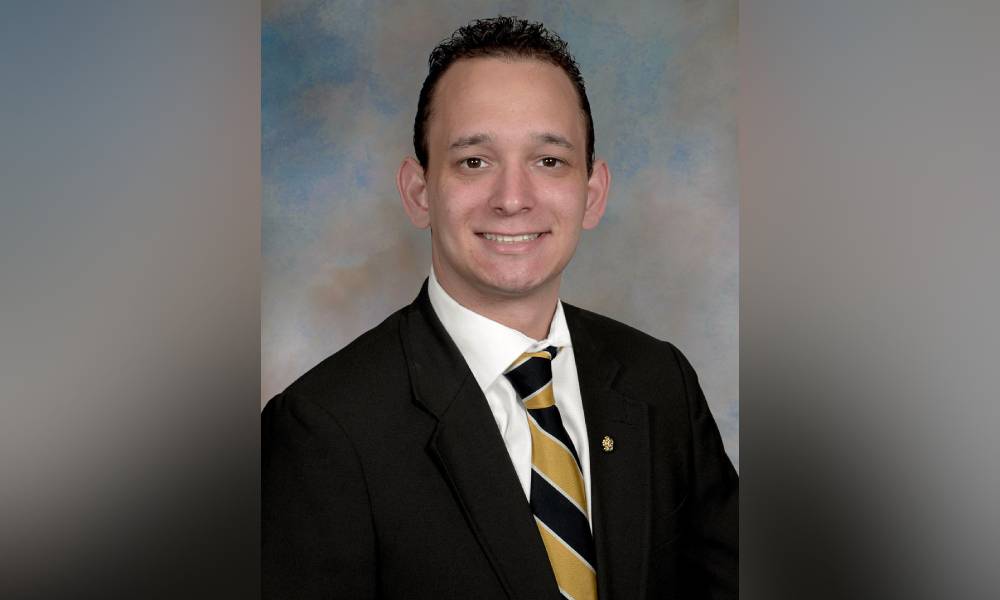This new Ontario advisor is one of two deaf advisors serving up to 300,000 Canadians

Andrew Stadnicki is the third generation of his family to be born deaf. But, even before he became a financial advisor as COVID began 18 months ago, he’d been using the knowledge that he’d gained from his experience to help others in the deaf community.
“The reason I went into financial advising,” he told Wealth Professional, speaking through an interpreter on Canada’s five-year-old voice-relay system, “is that I’d had a Registered Disability Savings Plan (RDSP) since I was 18 and I noticed that a lot of my peers didn’t have that, and they weren’t investing. I was always telling people, ‘come on, get into this’, so I decided to switch to business in university.”
Stadnicki, who now works at Desjardins Financial Security Independent Network in Mississauga, Ontario, serves clients in British Columbia, Alberta, Ontario, and Quebec. He tried university computer science, chemistry, and math, before business. When he returned for his MBA, he focused on financial analysis. But, a few months before he graduated, another deaf financial advisor he met suggested he become one, too.
“It was something I was already doing – advising people – and I could get paid for it, so I thought, ‘why not?’” he said. “I just went from there and really got into it.”
Stadnicki, who already has $5 million of assets under management, has some hearing insurance clients and is open to working with others in investments, too. But, he said, “my main goal is to improve the financial literacy of the deaf community and increase its financial wealth.”
While he said it’s hard to quantify the size of Canada’s deaf community since there’s such a spectrum of deafness, he estimates it could be 300,000 people scattered across the country. The signing community is much smaller.
He feels the door is wide open to helping new clients from his community as they’ve been receptive. He attributes that to the fact that it’s easy for him to communicate in the same language, but he’s also more familiar with instruments, like RDSPs, than hearing advisors. That could benefit the 80% of Canadians who qualify for them, but don’t yet hold them.
“I know the rules. I know the ins and outs of it. So, that’s an additional value for my clients because I have that personal experience and can relate to them in a way they understand in their language,” he said. “The bottom line is my priority is on communication, making that easy and accessible for clients.”
Stadnicki said his training was good, although he sometimes had to fight for access for interpreting services or captioning. He also now has a great supervisor and team, and primarily has what he needs to work – though he must sometimes advocate for other companies to meet on Zoom so he can have his interpreter on one screen and the presenter on another. While he said his branch is willing to fight for changes in the industry, and some wholesalers are fully on board, the financial industry still has a big barrier to providing deaf clients with all the information they need. Many videos aren’t captioned and a lot of podcasts from various financial partners aren’t accessible to him or his clients.
“A lot of my clients just don’t have direct access to information in their language. English may not be their second or even third language, for that matter,” he said, “So that’s my biggest challenge. I’m always fighting for accessibility.”
Stadnicki’s also encountered National Instrument rule #81-105, which states he must pay 50% for event interpretation costs.
“I agree I will pay 50% for food or renting a room, but not for interpreting costs,” he said. “I always say, ‘are you sure? Like, would you ask somebody in a wheelchair to pay 50% of the ramp cost for accessibility? That wouldn’t make sense.’”
Stadnicki also serves on two boards. The Ontario Deaf Foundation is trying to raise funds for Ontario organizations. The Ontario Video Relay Services Committee is challenging the CRTC to raise standards for Canada’s relatively new video relay service, which has several issues that must be addressed.
“So, I’m in two roles, often,” he said. “I’m making sure my clients understand I’m advocating for them. And, at the same time, I’m also advocating for the financial industry to accommodate my clients so they can benefit more from the financial world than they have.”
While Stadnicki knows it’s impossible for the two deaf financial advisors he knows – with him being one – to serve Canada’s entire deaf community, he would eventually like to expand his team to offer more service to the community, particularly since its eco-system is to support others in it.
“I’m all for more deaf financial advisors,” he said. “The community is pretty small, so some people might not be comfortable becoming my client because we’re very close. I think having competition is healthy and it’s good for people to have choices.”
As for the financial industry, Stadnicki noted that more provinces are introducing accessibility acts, but “the financial industry needs more awareness, more openings for people of diversity and understanding their needs, and to be more inclusive of those people in the decision-making.
“For example, the financial industry will make a decision on what’s best for the deaf people to use – like rule #81-106 – but that’s a hearing person making a decision for the community and not getting their input. They don’t understand how it is to navigate through the system, so I think they need to become more inclusive. Having deaf people on their teams helping to make decisions will make sure that it’s truly accessible.”



